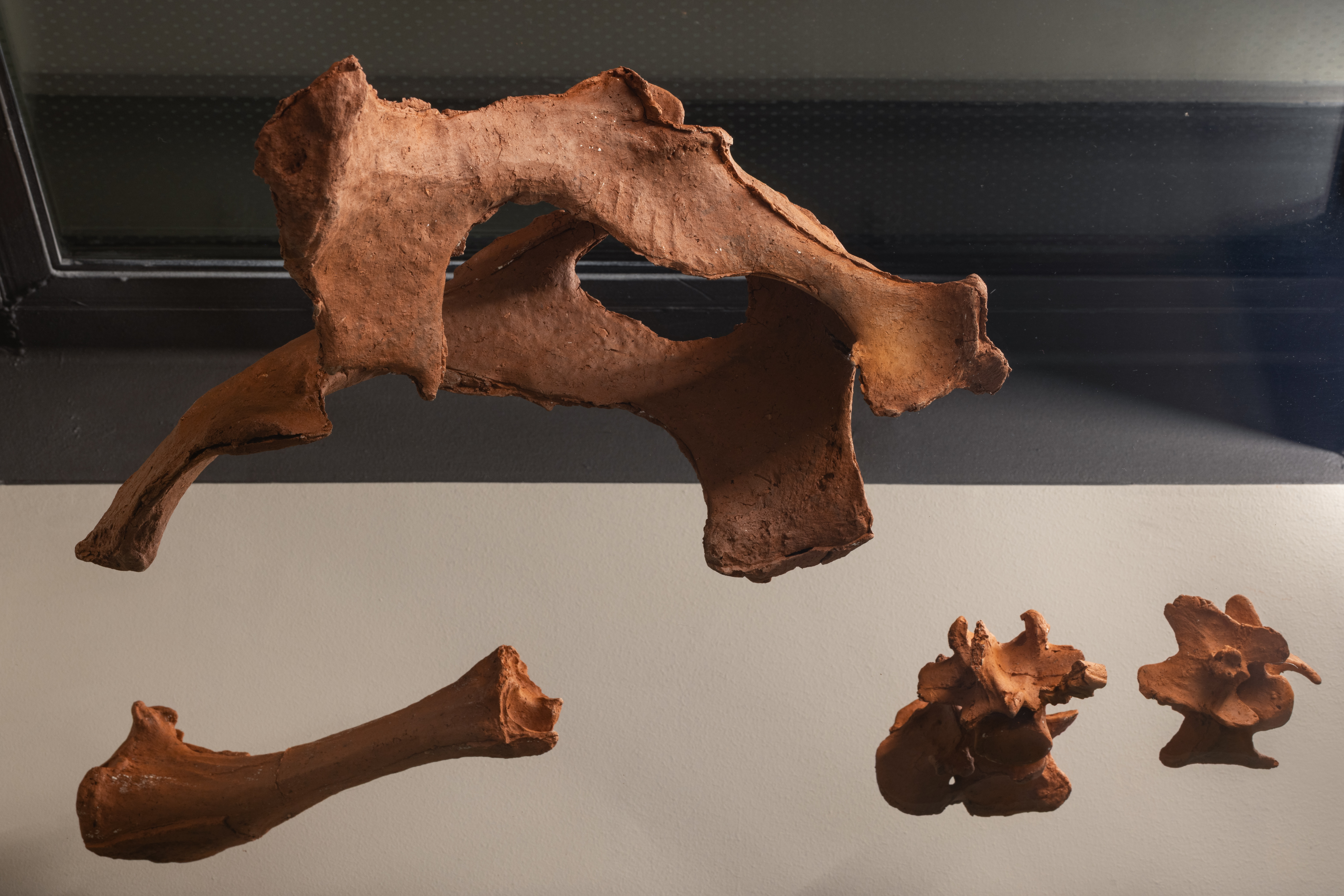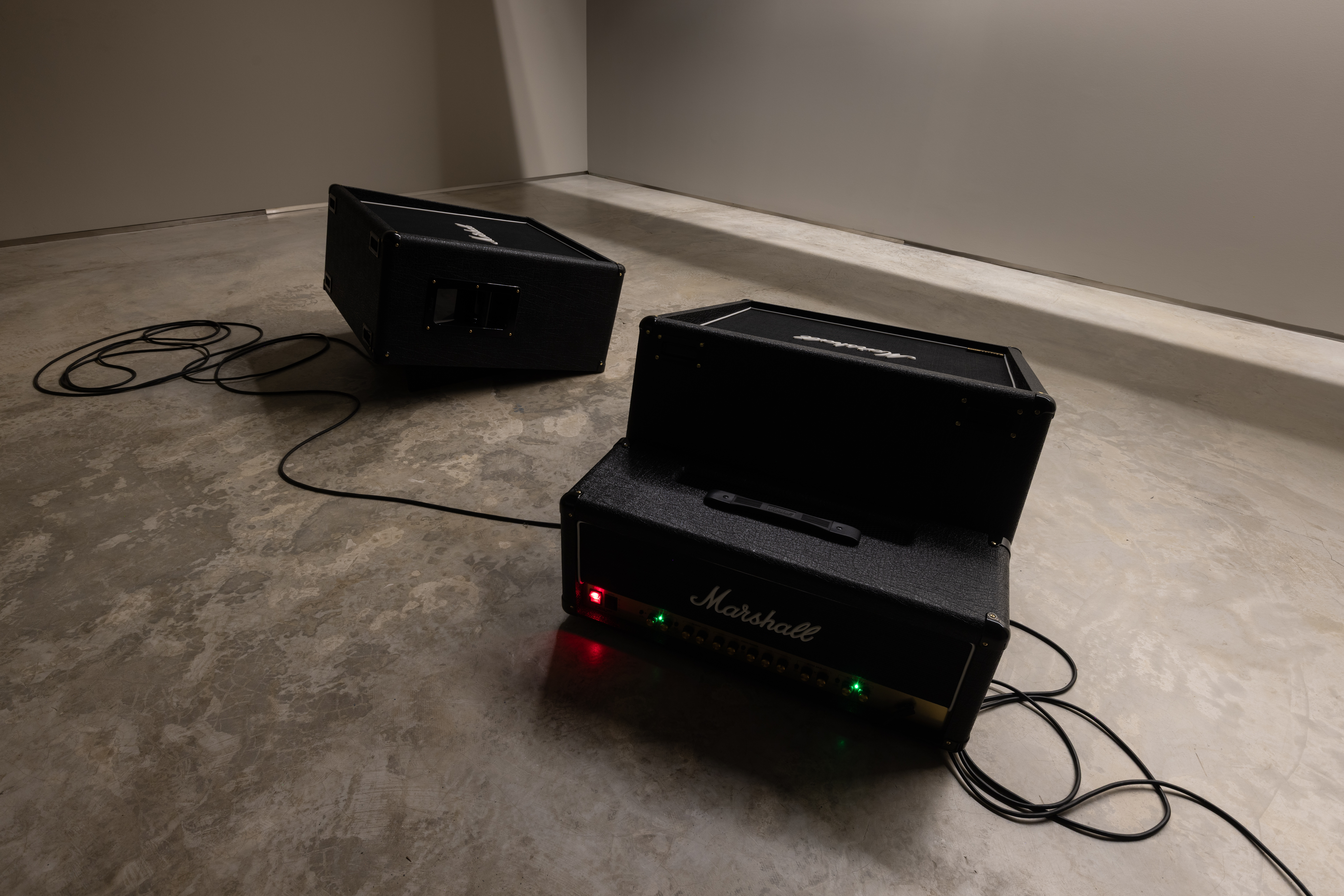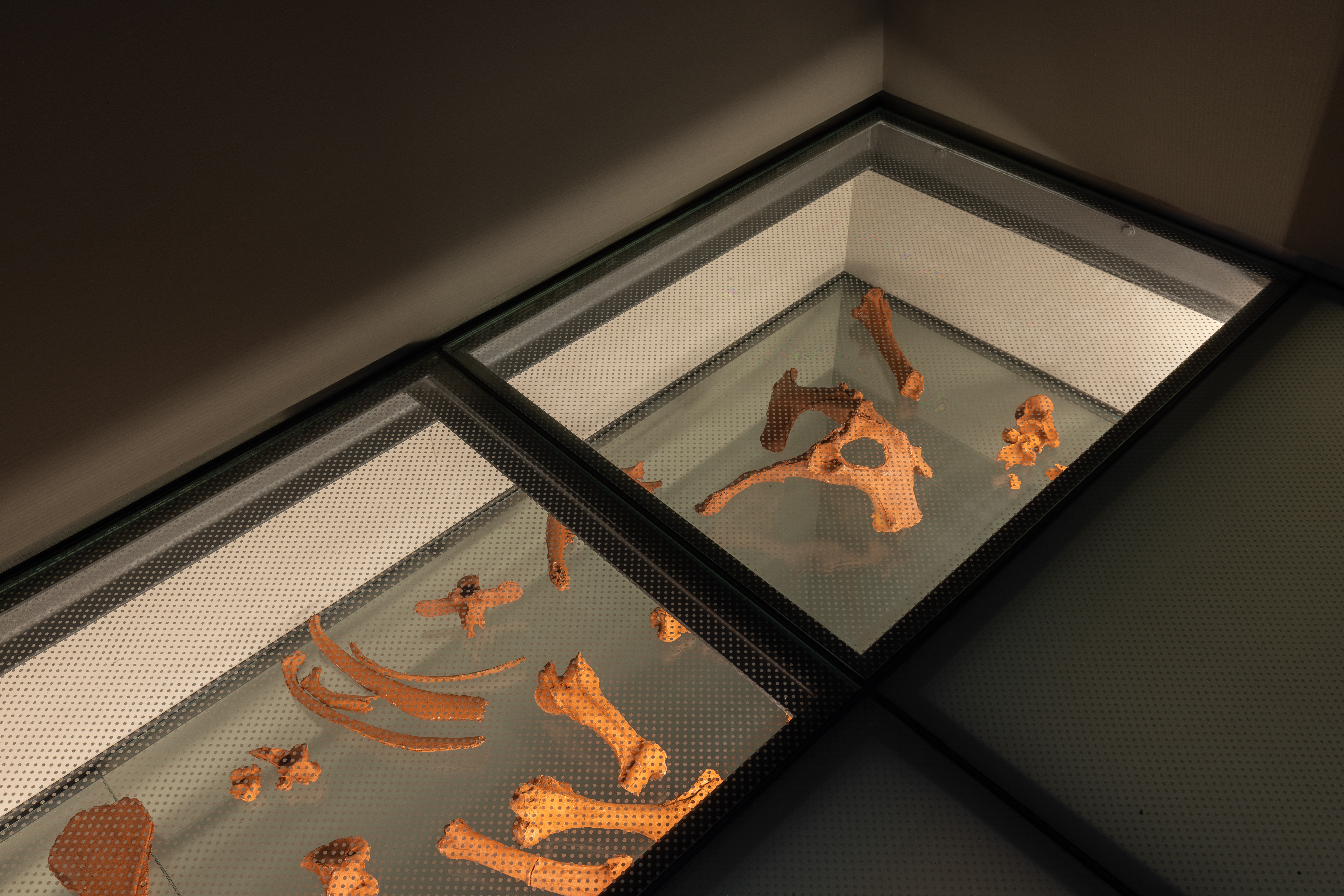









In 1956 and 1957 Edward Abbey enrolled as a ranger for the Arches National Park, isolating himself from the world. He spent a long period in the Colorado landscapes, living in a trailer, reporting on wildlife and the changes in what was then an untouched part of the world, before it was torn apart by human impact and tourism. His reports were published in a 1968 book – Desert Solitaire or a Season in the Wilderness. Around the same time, a young Michael Heizer, tired of the vibrating New York art scene, traveled to the Nevada desert with his trailer where he stayed while building his life project – City (1970 – 2022). Way before these two characters ever planned their commitment to solitude, Georgia O’Keeffe was going for long walks on the New Mexican deserts looking for bones and other elements to integrate in her paintings. After the unexpected underwhelming reception of his first studio album – Five Leaves Left (1969)– and struggling to perform it live, Nick Drake dropped out of Cambridge and rented a room in North London, where he locked himself playing his guitar and writing what is now, after his death, considered one of the best folk albums – Bryter Layter (1971).
Playing an instrument requires method. Repeating the same notes over and over again brings you into a trance- like state that is itself an isolation from whatever surrounds you and probably the most obsessive act one can engage in. I have always struggled with the fact that I was a better artist than a musician, but somehow music has always informed my practice and now I understand that its repetitive aspect was a way to replace my fluctuating lack of studio labor.
During the preparation of this exhibition, I lived in a rammed earth house built with the soil of the land where it stands; a construction technique used to insulate the interior from extreme high and low temperatures. The house is located in the south of the Iberian Peninsula, an area that could become inhabitable by the end of the twenty first century according to some specialists. Climate changes are causing severe droughts. The air and the wind are bone dry; from May onwards, everything is the color of steel. The nearest town is a twenty-minute drive and for days one might not see a single soul. Some film directors think this region resembles the Wild West the most; unsurprisingly someSpaghetti Westerns were shot in this part of the world.
The pieces in this exhibition – Ghost Ranch and Bull Guitar Drag (after Christian Marclay) – are the result of a series of actions that took place in this specific location and during a period of six months. In complete solitude.
One of the motifs of Western movies is the use of static, romantic views of the land, which function as premonitory moments that anticipate a gun fight or other kinds of violence. Throughout the dry season groups of vultures are often seen patrolling the skies, invading what is apparently a tranquil, beautiful and silent landscape, looking for food. During one of my walks, the scavenging birds led me to a bull skeleton. In the footsteps of Georgia O’Keeffe, I managed to collect a big part of the skeleton except for some bones that were carried away by wild cats, foxes, vultures and other animals.
I made fifty-nine molds of every bone of this skeleton with my bare hands. These molds were then filled with the earth from where they were found, turning death into a resurrection. Every sculpture now carries the soil of a land on its way to extinction.
Mold making is studio labor and, therefore, akin to playing an instrument. One tirelessly repeats the same movements with the goal of repeating the same shape forever. For many musicians, instruments are carriers and they are limited to a certain number of songs – contemporary pianist Nils Frahm, keeps on buying and selling keyboards until they run dry.
The guitar has always been a McGuffin* inWestern movies – like in Nicholas Ray’s Johnny Guitar. A cowboy carries a guitar strapped to his back, a replacement for his addiction to guns.
There are two guitars in this exhibition. The first, a Fender Jazzmaster tuned to open D minor [1], was left alone on the red rocky soil, facing the rust of sundown with the west wind blowing over its metal strings, the sound is both melancholic and spiritual as the wind never blows the same way, thus creating different random melodies often interrupted by the landing of dirt particles and small insects on it. The instrument signals the dry air that killed the bull whose skeleton I found. This sound piece was the key for the project to unravel; the weeping guitar works as a soundtrack for the sculptures, scattered inside a vitrine without any particular order. This vitrine is meant to be walked over, as in many archeological sites, from the Acropolis to Teotihuacán. Contrary to these places one can also inhabit the ruins seeing them from underneath, like a corpse inside its grave.
While the first guitar’s presence is phantasmal, represented by its sound, blasting out of two Marshall cabinets used in big stages, the second – a Squire Mustang – although physically present, carries a ghost of its action and its musician.
In a long interview with Seán O’Hagan [2], Nick Cave reflects on his creative process mentioning that his songs always depart from images. See for instance the strong imagery behind Hollywood [3]: A mountain lion roaming Los Angeles’ valleys, with their big mansions, in the night. Much like songs, artworks can remain artworks in their suggestive state even if they are never materialized. Mike Kelley’s Monkey Island (1982-3) is a collection of plans, writings and references that inform the viewer on how the finished work would look like. Its spiritual aspect makes it even more interesting than a tangible version of the island.
Bull Guitar Drag (after Christian Marclay), witnessed a failed attempt to record the sound of a 600kg brown bull dragging an electric guitar [4] along the very same fields where the skeleton of the other bull was found – there is no footage of the action, as the cameras were not set yet and only a ten-second sound recording is left. The bull defeated my work, destroying the guitar, playing at its own will. The animal is glorified to a godlike state, a hero, the musician I have always dreamt to be. This moment is now contained inside a destroyed electric guitar, like the soil inside the molds. This is now a relic as many other guitars sold in auctions for millions of dollars because they bear witness to historical moments [5].
Ghost Ranch is a Western; a duel, between life and death. It is my homage, my farewell letter, my gift to this landscape. My plea for forgiveness.
"Looking back, I can see that I had a relationship with the landscape that in one sense was very embodied, and at the same time existed independently of me, with a history that preceded and did not include me."[6]
This project is dedicated to the Love between Teresa and Rui.
Henrique Pavão, 2025
*The term was introduced by Alfred Hitchcock. It consists of an object (device or event) of a symbolic nature whose relevance is not inherent, but nevertheless is crucial to drive the plot and the characters’ actions.
[1] Open or alternate tunings often used in blues and country music mean tunning the guitar strings to a specific combination of notes that when strummed (without placing the fingers on the fretboard) the guitar plays a full chord. D minor is considered the saddest chord in western musical vocabulary. The extensive use of alternate tunings was the main reason for Nick Drake’s difficulty to perform live, forcing him to spent a fair amount of time retuning his guitar between songs.
[2]Nick Cave and Seán O’Hagan - Faith, Hope and Carnage, 2022.
[3] Nick Cave and The Bad Seeds – Ghosteen, 2019.
[4] Proportionally, the weight of the bull and the electric guitar is equivalent to a human carrying a pen in his pocket.
[5] Kurt Cobain’s Martin D-18E used in Nirvana’s MTV Unplugged performance (1989) was sold for six million dollars in 2020.
[6] Lucy Raven - https://www.artforum.com/columns/lucy-raven-on-concrete-cinema-and-reimagining-the-genre-of-the-western-249695/
Ghost Ranch, 2025
Ghost Ranch, 2025
Bull skeleton made with the earth from where it was found (terracotta), Marshall DSL - 100HR (tube amp head), 2 x Marshall MR1960 B (guitar cabinet), re-amping box, sound (44 minutes of dry air amplified through an electric guitar tunned to open D minor, loop)
Variable dimensions
Sound Mix and Master - Moritz Kerschbaumer
Technical support: ar.co - Centro de Arte e Comunicação Visual
Photo — Bruno Lopes
Bull Guitar Drag (after Christian Marclay), 2025
Electric guitar
101 x 31 x 4 cm
Photo — Vasco Stocker Vilhena
Bull Guitar Drag (after Christian Marclay), was carefully overseen by a specialized team to ensure full respect for animal welfare.
No animals were harmed in the making of this exhibition, and all materials were sourced ethically and responsibly
© 2025 Henrique Pavão